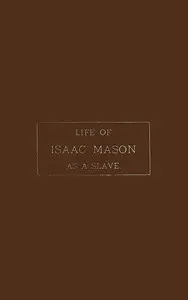"A Belle of the Fifties" by Virginia Clay-Clopton is a memoir capturing the dramatic social and political atmosphere of Washington and the South from 1853 to 1866 through the eyes of a Southern woman. The story begins by painting a picture of Virginia's childhood in North Carolina and Alabama, colored by plantation life and the characters surrounding her, setting the stage for her marriage to Clement C. Clay, Jr. and involvement in the high society and historic events leading up to the Civil War. Readers gain insight into a world shaped by family, cultural evolution, and the looming shadows of a nation on the brink.

A Belle of the Fifties Memoirs of Mrs. Clay of Alabama, covering social and political life in Washington and the South, 1853-1866. Put into narrative form by Ada Sterling
By Virginia Clay-Clopton
Witness a Southern woman's journey through love, high society, and historical storms as she finds herself at the center of a nation on the edge of war.
Summary
About the AuthorVirginia Clay-Clopton (1825–1915) was a political hostess and activist in Alabama and Washington, D.C. She was also known as Virginia Tunstall, Virginia Clay, and Mrs. Clement Claiborne Clay. She took on different responsibilities after the Civil War. As the wife of US Senator Clement Claiborne Clay from Alabama, she was part of a group of young southerners who boarded together in the capital in particular hotels. In the immediate postwar period, she worked to gain her husband's freedom from imprisonment at Fort Monroe, where Jefferson Davis, former president of the Confederacy, was also held.
Virginia Clay-Clopton (1825–1915) was a political hostess and activist in Alabama and Washington, D.C. She was also known as Virginia Tunstall, Virginia Clay, and Mrs. Clement Claiborne Clay. She took on different responsibilities after the Civil War. As the wife of US Senator Clement Claiborne Clay from Alabama, she was part of a group of young southerners who boarded together in the capital in particular hotels. In the immediate postwar period, she worked to gain her husband's freedom from imprisonment at Fort Monroe, where Jefferson Davis, former president of the Confederacy, was also held.










![History of Linn County Iowa
From Its Earliest Settlement to the Present Time [1911] by Luther Albertus Brewer](https://cdn.a2-host.cloud/yv-pPXoTWrJvOiGQqTO5tQQkGtCdJMUs2IlR902VZ54/rs:fill:215:325:0/g:ce/aHR0cHM6Ly9zcC1hc3NldHMuczMudXMtd2VzdC0wMDQuYmFja2JsYXplYjIuY29tL2Jvb2svNDIyMjAvSGlzdG9yeV9vZl9MaW5uX0NvdW50eV9Jb3dhX0Zyb21fSXRzX0VhcmxpZXN0X1NldHRsZW1lbnRfdG9fdGhlX1ByZXNlbnRfVGltZV8xOTExX2NvdmVyLmpwZw.webp)



